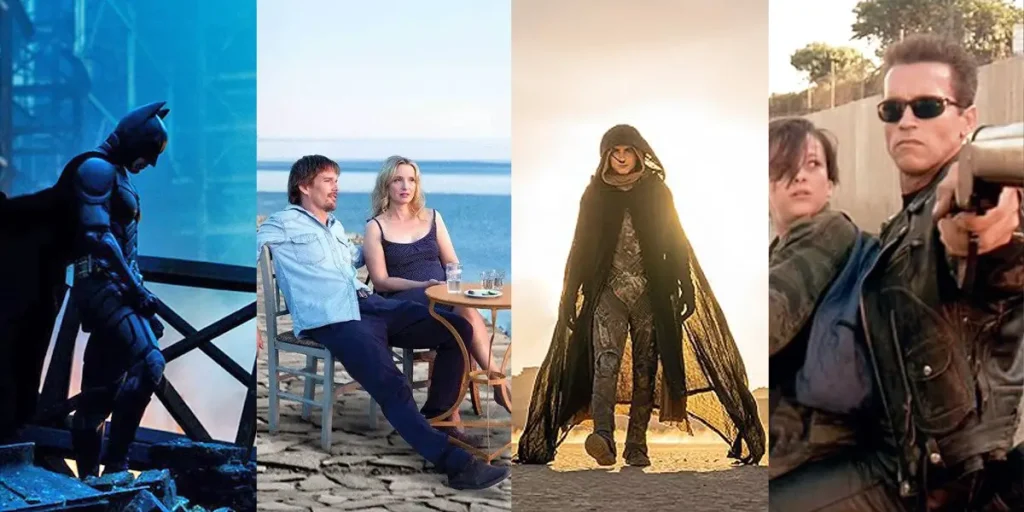Film sequels get a bad rap, but plenty have outdone their predecessors. Here are 25 movie sequels that are better than the original!
So, considering my last article was all about how original movies need more support, why not be a hypocrite and follow it up by talking about sequels? Movie sequels can generate any reaction from fan excitement to tired eye-rolls, the latter because most sequels aren’t as good as their respective originals. But, as has been commonly pointed out, there are plenty of movie sequels that are better than the original and have stood the test of time as classics in their own right. So much so that I could think of 25 films that show how, sometimes, continuing a story is hugely beneficial.
In ranking these sequels, the most important factor is obviously their pure quality. But I also considered how much of an improvement each sequel is over its predecessor(s) and how well it furthers the overarching story, characters, or world of its series. I’ll also stick to one sequel per direct line of films for the sake of variety, although I count spinoff series independently from their franchises’ “mainline” films. Everything else is pretty self-explanatory, so let’s not waste any more time. Here are 25 movie sequels that prove even the seemingly greatest originals can be topped!
25. Star Trek II: The Wrath Of Khan
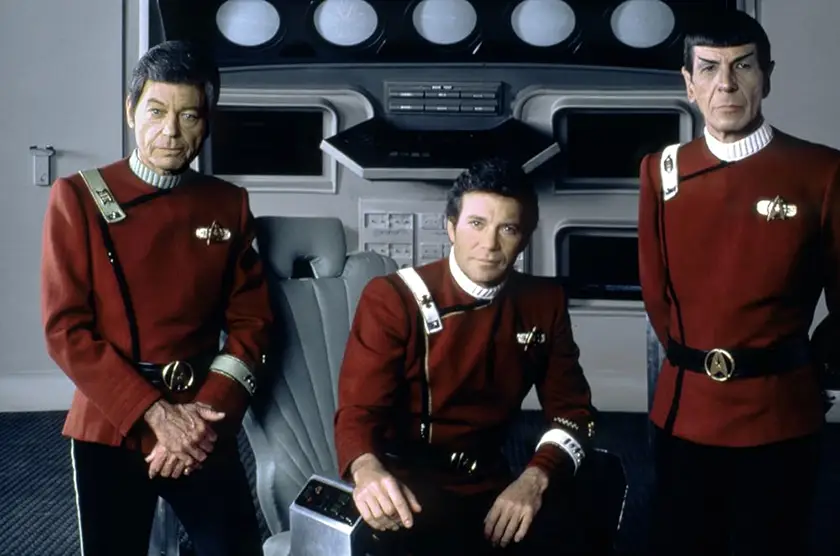
Star Trek has endured for generations – haha – but its first feature film was not one of its crowning achievements. Star Trek II: The Wrath of Khan, on the other hand, was good enough to revitalize the entire franchise in people’s minds. In the 23rd century, the starship Reliant comes across Khan Noonien Singh (Ricardo Montalbán), who was wronged by Admiral James T. Kirk (William Shatner) and is hellbent on revenge. The biggest thing Wrath of Khan has over the first Star Trek movie is Montalbán’s performance, which elevates an otherwise decent villain into one of the most memorable in film history. He oozes power, vindictiveness, and even sick charm every second he’s on screen, but you also pick up that his relentless quest is all he even has to live for anymore.
That lack of purpose is mirrored by Kirk’s dissatisfaction with his life as he reckons with his middle age, which itself ties in well with personal revelations in his life, regrets for his past, friendships and their ensuing consequences, and even a device in the film that creates life from nonliving matter. It’s all quintessential Star Trek, backed up by enriching dialogue that’s a much better compliment to silver-screen spectacle than what the first movie offered. While the direction and acting sometimes lack a bit of energy, the tension, stakes, and morals are always at the forefront to keep you locked in the whole way through. Even today, The Wrath of Khan is still seen as the best Star Trek movie, and it’s easy to see why.
24. Candyman (2021)
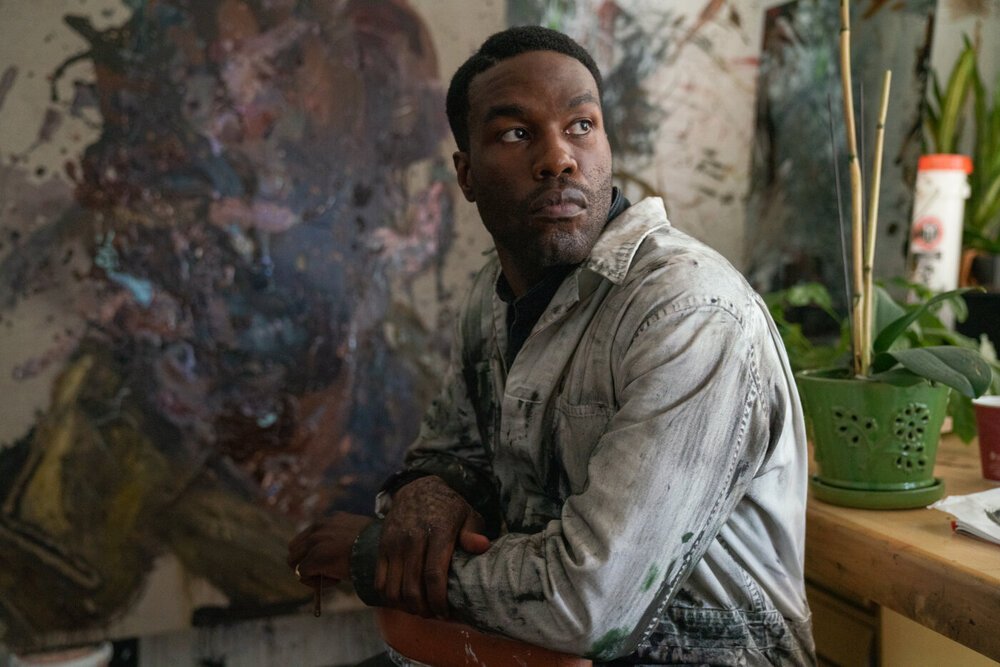
This is for sure a hot take, but while I respect what the 1991 slasher Candyman did, its direct sequel (which ignores the franchise’s previous sequels for maximum confusion) hits its ideas much more effectively. Decades after the events of the first movie, Anthony McCoy (Yahya Abdul-Mateen II) is an artist living healthily in Chicago’s now-gentrified Cabrini-Green district. When he’s told the story of the Candyman killer, he’s inspired to create a piece that revives the legend in people’s minds and, as a result, in reality. The first movie is a gnarly horror film that touched on some interesting bits of racial commentary, but the 2021 sequel doubles down on them by focusing much more directly on the actual Black experience… or at least, someone who’s susceptible to it.
Candyman 2021 dives into how certain people benefit from those who systemically suffer and proceeds to tear those same people down. Because Cabrini-Green is now much more of a white populace, those new residents are inheriting the same horrors of the Candyman that the former residents did, meaning an entity that once reinforced racial suffering is now a means of nasty vengeance. Even Anthony is forced to pay for standing on the shoulders of tragedy and horror that, before, only boosted his art and livelihood. This sequel is not only a great “Yes, and…” to the original, but it goes much more in-depth with the perspectives of the most relevant demographic in the overall story. It’s a mean, ruthless, and of course scary way to take the story into the modern day. And thank goodness I managed to avoid saying the killer’s name a fifth time.
23. Deadpool 2
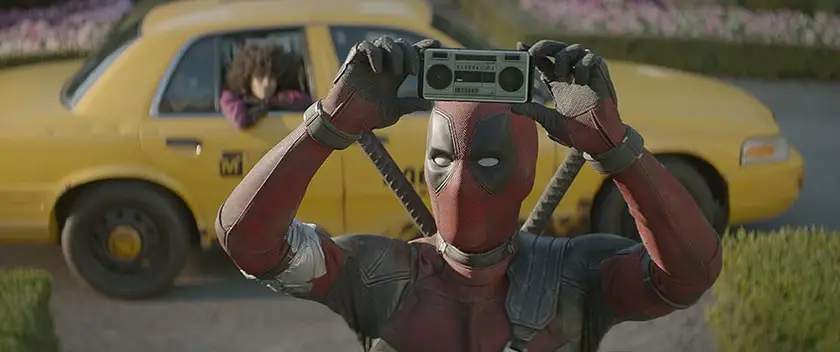
Possibly another unpopular opinion, but the solid groundwork of 2016’s meta superhero comedy Deadpool was hilariously built upon in its first sequel. Deadpool/Wade Wilson (Ryan Reynolds, Free Guy) has been enjoying his vigilante life, until a tragedy throws him into the arms of the X-Men and on a course to redeem an abused mutant child (Julian Dennison, Hunt for the Wilderpeople). The fourth-wall-breaking humor of the original is as funny as ever, ripping into the comic book genre while paying loving tribute. The original characters are still just as fun, and newcomers like Domino (Zazie Beetz, Joker), Cable (Josh Brolin, Dune), and the obviously important Peter (Rob Delaney, Argylle) all provide their own unique blends of comedy… as well as, surprisingly, drama.
Deadpool 2 is noticeably more emotional and sentimental than the original, especially with Wade’s arc of trying to find a family and purpose after his loss. The bonds he goes on to make as a result, while still ridiculous, come across as very genuine and make you feel like he’s truly carved out his own little corner in this universe. The action has also been improved with the distinct touch of director David Leitch, and the big payoff to a building mutant team called the X-Force is worth the price of admission alone. Overall, Deadpool 2 doesn’t totally reshape its franchise, but it improves the whole experience with more thrills, more humor, and most of all, more investment.
22. How To Train Your Dragon 2
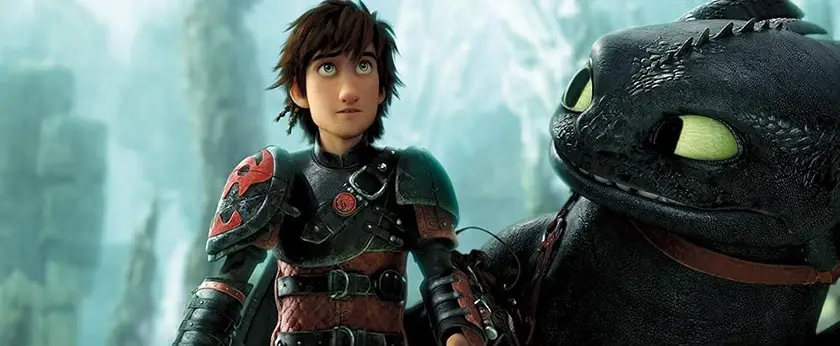
2010’s How to Train Your Dragon is one of the most beloved animated films of all time – it must be to get a pointless live-action remake – but both its sequels have managed to outdo it. Though I personally like 2019’s The Hidden World a bit more, How to Train Your Dragon 2 is not only less flawed but is the sequel that brought this series to truly epic territory. The Viking village Berk has accepted and adopted dragons, but this also puts them in the crosshairs of Drago Bludvist (Djimon Hounsou, A Quiet Place: Day One), a warlord who seeks to build a dragon army. Hiccup (Jay Baruchel, Tropic Thunder) and his allies must counter his attacks with the help of his newly discovered mother (Cate Blanchett, TÁR). While the original film had moments of incredible spectacle, this is the film where the entire world suddenly felt huge.
Our central characters are far more capable and grown into themselves, but with that come even more complicated dilemmas and strategies. Hiccup’s kind, measured approach did wonders for him in the first movie, but it’s challenged greatly by his new enemies’ sheer greed and might. He has to grapple with how much aggression is needed versus how much of his true self is needed. There are more pieces at play, but the film never loses sight of the family and friendship that’s always been the heart of these movies. It also lets more of those connections and discoveries sink in compared to the first film, and through much more vivid animation to boot. It may buckle a bit under the weight of so many threads, but How to Train Your Dragon 2 is an explosive sequel that takes the boy-and-his-dragon story to the next level.
21. Captain America: The Winter Soldier
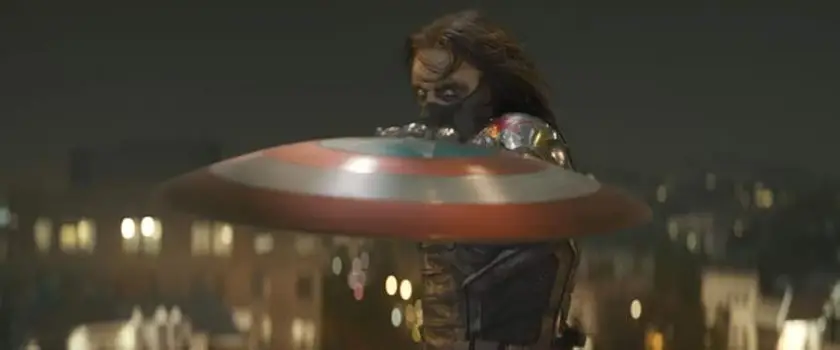
In all honesty, the Russo brothers have directed several MCU sequels I’d be willing to include here. But I had to pick the one that raised the bar for not just Captain America, but the Marvel Cinematic Universe as a whole. World War II super soldier Steve Rogers (Chris Evans, Knives Out) is now in modern times, but he finds American politics have become much greyer when he’s put on the run from a compromised S.H.I.E.L.D. and his brainwashed best friend Bucky Barnes (Sebastian Stan, A Different Man). The idea of a staunchly patriotic soldier from the 40s suddenly thrust into modern day is very rich, and The Winter Soldier takes full advantage of the confusion, disgust, but ultimately lingering hope that a character like Steve would have, instantly getting you on his side to a much greater extent than ever before.
The Russos may have gone off the rails in recent years, but their touch turns what could have been a standard superhero movie into a gritty, white-knuckled action thriller with some of the best set pieces in the MCU. Bucky may not be as developed here as he would be later, but his role as a tragic villain speaks to both his and Steve’s friendship and the dirtier tactics of a new world. Plus, you still get all the expected Marvelisms you’d want without them getting in the way of the more mature storytelling, meaning everyone who sees this movie can get what they paid for and maybe didn’t even realize they wanted.
20. Puss In Boots: The Last Wish
Talk about the biggest glow-up in DreamWorks history. The original Puss in Boots was seen as a middling Shrek spin-off at best, and here comes a sequel 11 years later that’s often cited as one of the best animated films of the century. When the titular Puss (Antonio Banderas, Babygirl) finds he’s used eight of his nine lives, he journeys to find a legendary wishing star and get his lives back. The Last Wish ditches the “realistic” Shrek-like aesthetics of the first movie in favor of a more stylized, painterly look that, in the words of this film’s Goldilocks, feels just right in a story like this. It goes hand-in-hand with the insanely creative and visually remarkable set pieces that almost go too fast for you to process in one viewing.
But what really took me aback was how thoughtful the story is. The whole “nine lives” gimmick isn’t just played for humor; it actually serves as an outlet for Puss to finally confront the idea of permanently dying, what it means to truly be afraid of death, and what it means to live. Every other character – of which there are many – gets exactly as much time as they need to realize their own storylines, and they converge in a climax that frankly trumps anything Disney or Pixar have done in nearly a decade.
I don’t think anyone had any sort of expectations for a sequel to one of the most “Oh yeah, that exists” DreamWorks movies ever, let alone something that takes this big a swing and hits as often as it does. With charming characters, gorgeous animation, mostly solid humor, and a shockingly smart story, Puss in Boots: The Last Wish proves you can never truly count a franchise out.
19. The Lord Of The Rings: The Two Towers
Even if you believe this film’s own sequel Return of the King is a better movie – I personally don’t – you likely admit that Lord of the Rings: The Two Towers is an excellent continuation of the J. R. R. Tolkien adaptation The Fellowship of the Ring. We rejoin hobbits Frodo and Sam (Elijah Wood and Sean Astin) as they take the evil One Ring to its destruction, now with the help of its former bearer Gollum (Andy Serkis). Meanwhile, the rest of the Fellowship fight off the army of Saruman (Christopher Lee) in the Battle of Helm’s Deep. From the first scene, you can immediately see how much better the editing is compared to Fellowship. While the original struggled to squeeze in its introductory lore, this one takes a damn breath and lets you embrace the intensity of every fantastical element, making this the best-paced film in the trilogy.
But that wouldn’t mean much if the harsh but heartfelt story from the original hadn’t been maintained. Like a lot of the best sequels, The Two Towers keeps pushing its characters towards bleaker and bleaker states that force them to dig deeper to fight another day, especially in building up to the incredible climactic battle. At no point do you lose sight of the countless innocent lives that depend on our heroes’ efforts, nor do you forget the murky waters that even some of the most well-intentioned people fall into when they believe all is lost.
Frodo and Sam are relegated a bit towards being the “B-plot,” but that’s made up for thanks to their dynamic with Gollum. Andy Serkis is iconically hammy in the role, and the motion-capture CGI is jaw-dropping for 2002. There’s really nothing not to like in The Two Towers. It’s a perfect bridge movie that irons out its predecessor’s kinks and gets you amped up for the final chapter to come.
18. Aliens
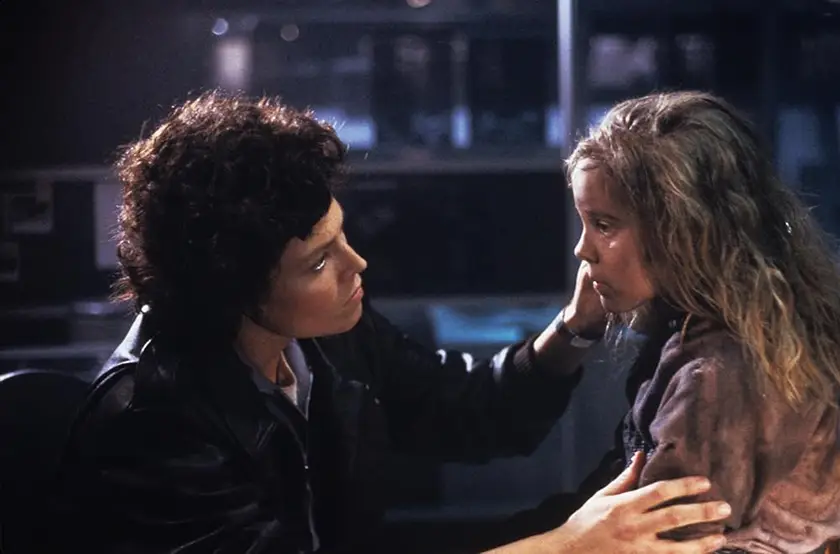
This is definitely the narrowest gap between the original and sequel on this list, as I consider them borderline tied. But if I had to choose, James Cameron’s Aliens just nudges out the Ridley Scott original, Alien. We return to the far future with Ellen Ripley (Sigourney Weaver), who survived an alien attack but agrees to help a Colonial Marines unit to investigate the aliens’ home in search of a human colony.
It’s as logical and definitive a leap forward that you could possibly make with a sequel: there was just one alien before, so now let’s throw in a whole bunch of them. Even though I’m more of a horror fan than an action fan, Aliens maintains the original’s blood-soaked intensity and sweaty, disgusting atmosphere so perfectly that it still feels like a horror movie when the guns aren’t going off. You just get more of a shot in the arm when the aliens actually appear.
What Aliens definitely has over the original is the primary group of characters. Ripley’s relationship with Newt (Carrie Henn), a girl who’s stuck on the colony with the team, is a great way to bring Ripley out of her emotionally detached shell as a warmer person, giving her someone she’d actually go out of her way to save this time. She still has the badass nature you’d want, but she ends the film in a much more emotionally healthy state compared to how she started.
Corporal Dwayne Hicks (Michael Biehn, The Terminator) and android Bishop (Lance Henrikson, Scream 3) also round out the main group that you desperately want to see survive until the end… although sorry, Hudson, I could live without you. Mastering everything we love in sci-fi, action, and horror, Aliens complements its predecessor to make a duology of classics that seemingly nothing else in the franchise can touch.
17. John Wick: Chapter 2
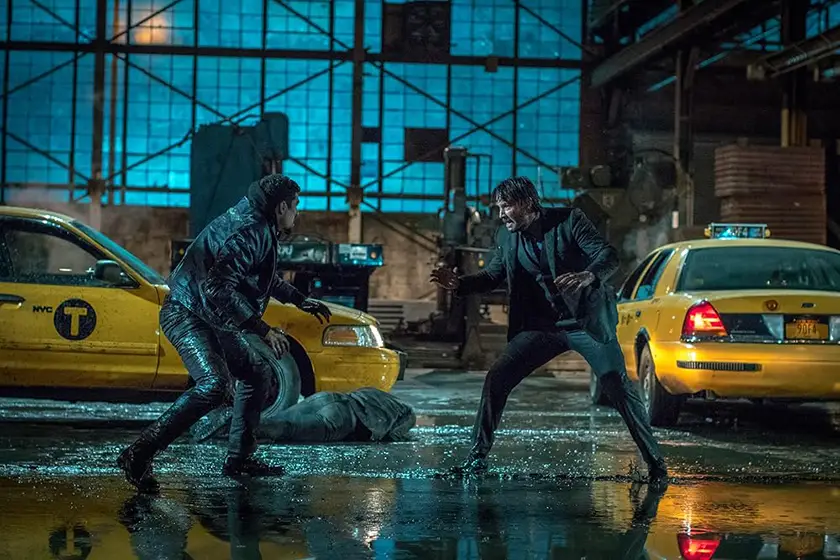
The original John Wick took everyone by surprise as a shockingly kickass action movie. But while Wick himself (Keanu Reeves, Sonic the Hedgehog 3) may have avenged his dog, his return from retirement has put all eyes back onto him. He must now honor a past blood oath that subsequently makes him a target of his former underworld organization. Admittedly, an action protagonist being forced into the field isn’t as emotionally riveting as him taking out the people who killed his dog… but that’s kind of the idea. You feel sorry for Wick because he seemingly wasn’t allowed to get that one bit of justice without his entire history smashing back in his face, unwilling to just let him live out the rest of his days as he wants.
But the film also suggests a darker side of him that not only realizes such a future can’t exist, but that his true self couldn’t accept it even if he got it. The other John Wick sequels bring this up too, but they can’t help but feel like slight retreads of what Chapter 2 established. That goes for the whole setup of Wick being hunted left and right, with more people out for his head seemingly by the minute.
The first movie may have set everything up, but Chapter 2 set the blueprints for the rest of the mainline series. And it did so with too many memorable action bits to count, a great expansion of a world straight out of a graphic novel, and the most efficient runtime of the series. If there’s a formula to the John Wick movies, this is the film that perfected it. Which can also be said for…
16. Mission: Impossible – Fallout
When the sixth film in your franchise is considered the best one by many, you’re doing something right. As great as other entries are, Mission: Impossible – Fallout is the one that nails everything you’d want from a movie in this series. IMF agent Ethan Hunt (Tom Cruise) and his team are tasked with recovering three plutonium cores from a terrorist group called The Syndicate, who plan to use them for nuclear bombs. They’re joined by the returning MI6 agent Ilsa Faust (Rebecca Ferguson, Doctor Sleep) and new agent August Walker (Henry Cavill, who appears in Justice League unlike his mustache). Maybe it’s because this is the first Mission: Impossible movie helmed by a returning director (Christopher McQuarrie), but it’s easily the one with the boldest, richest action in the series at that point.
You go to these movies for the stunts, and by God do you get them here. We’ve got dives out of airplanes, people dangling off helicopters, riding through hectic Paris streets, and one of the best hand-to-hand sequences ever filmed. True, the next two films may beat this one in terms of raw action – which is saying a lot – but Fallout still ranks above them for how firmly it locks down on the tension of its plot, the likeability of its cast, and even the catharsis we didn’t realize had been building across multiple previous movies. No aspect feels like it’s getting in the way of any other, making for easily the most well-rounded film in the series and the definitive Mission: Impossible experience.
15. Dune: Part Two
Denis Villeneuve’s Dune is a masterclass of worldbuilding that’s only hindered by a relatively simple story. Its sequel picked up the slack and then some with what is, in every aspect, one of the grandest fantasy films ever. Timothée Chalamet (A Complete Unknown) is Paul Atreides, a former royal who joins the desert Fremen tribe to fight against the forces that slaughtered his family line.
Dune: Part Two is not only far denser than the original, but it has a lot more to directly say. Paul is dealing with a prophecy that he’s some long-awaited messiah, and the farther he tries to push himself from that fate, the more outside forces and even those he trusts pull him closer. This is a movie about power, how to gain it, how it can serve and destroy whole entities at once, and how it warps and twists good intentions beyond what anyone probably anticipated.
Oh, and it’s one of the most incredible things I’ve ever seen in a movie theater. Paul’s first ride on a sandworm is the new standard for how to conceptualize, shoot, and edit any big-scale sequence in live-action, as is the brief but spectacular climactic attack. The insane scope and virtually spotless effects tell so much of the story on their own, as do performances from actors like Rebecca Ferguson, Zendaya, and the scarily transformative Chalamet. Plus, the movie is just plain weird at times, which the person I saw it with seemed to think was a negative while I just basked in the glory of psychedelic worm juice and a malevolent fetus. There’s so much to cover that the film slightly struggles to maintain its contemplative, melancholy pacing, but Dune: Part Two is otherwise a blockbuster behemoth in an age where so few have thrived.
14. Before Midnight
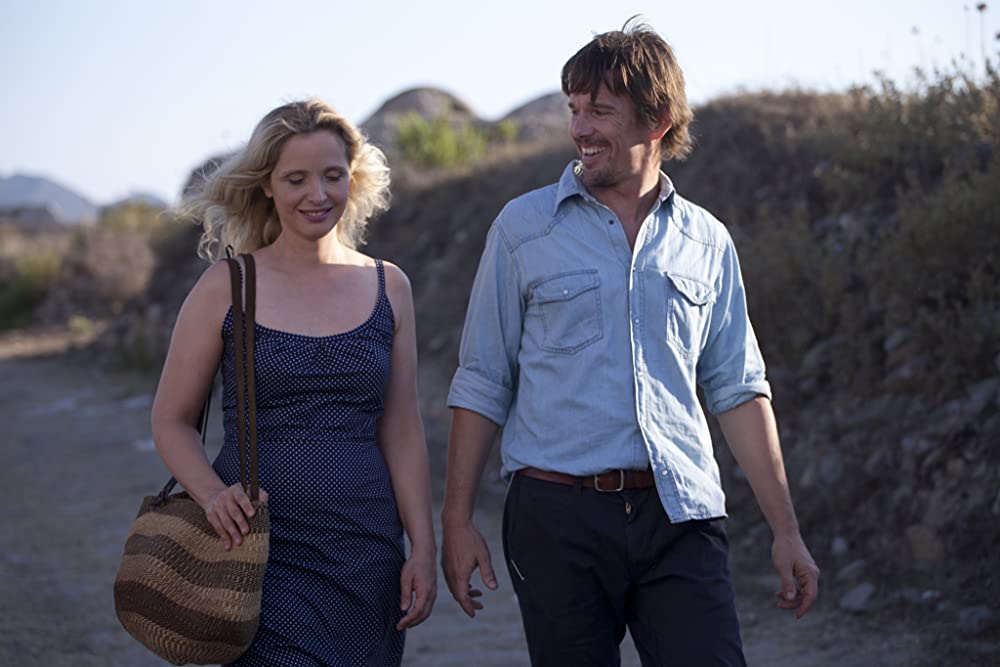
The first two films in Richard Linklater’s Before trilogy tell the tale of Jesse and Céline (Ethan Hawke and Julie Delpy), two star-crossed lovers who meet in Vienna and reunite nine years later in Paris. Nine years after that, Before Midnight begins with them in an established relationship as parents vacationing in Greece… and then proceeds to painfully dissect that relationship like a gutted frog. The first half makes it look like things are mostly going well with these two, but it subtly hints at deeper resentment that eventually explodes into a protracted, brutal fight. Before Midnight was already working as a good concluding chapter to the Before films with the sharpest dialogue, best acting, and best pace of the trilogy. But it’s the endgame that makes this sequel downright transformative.
This movie annihilates the happy ending we were rooting for and instead shows that no matter what choices you make when it comes to love, the sacrifices and changes that happen with age are going to complicate everything. The Before trilogy is suddenly changed from a fairy tale romance to a giant question of what is or isn’t worth pursuing as a complicated human being. You feel how much time has passed for these characters since their very first meeting, how much they’ve changed, and how much they’re now bearing the cruel weight of the future in their minds. For the final film in a trilogy to pull off something that risky is insanely impressive, and it makes Before Midnight one of the very rare cases where a second sequel casts the longest shadow.
13. Spider-man: Across The Spider-verse
Spider-Man: Into the Spider-Verse blew people’s minds and changed the animation landscape as we know it. And then Across the Spider-Verse came along like, “Hold my webbed-up beer,” by pushing the story and visuals near their breaking point. When Spider-Man/Miles Morales (Shameik Moore, Dope) is visited by interdimensional friend Gwen Stacy (Hailee Steinfeld, Sinners), he follows her to an organization of all Spider-People that holds grim information about Miles’s supposed fate. Among many, many other things. Seriously, I can’t overstate how much this movie throws at you. Even more than the first film, Across the Spider-Verse takes full advantage of the multiverse gimmick to give you insane imagery, gorgeously varied animation styles, and references that Spider-Man experts will get but even casual moviegoers can appreciate as just part of this crazy universe.
But most importantly, the film ties all of that into a furthering of Miles’s struggle to know where he fits in as his own Spider-Man, defying how the story of all Spider-People is “supposed” to go, including Gwen’s. The way Across the Spider-Verse works in Spider-Man’s history is so surreal but given so much weight that I buy it instantly. This is a story about Spider-Man in every conceivable way, on top of giving Gwen so much more dimension that she’s practically a co-lead. Given the film’s cliffhanger ending, this sequel may rank even higher once the third Spider-Verse film is out and we see where certain plot threads go. But even with that lack of finality, this is an astonishing achievement that leaves me begging for more… provided it can be done without the animators working themselves to death.
12. Shrek 2
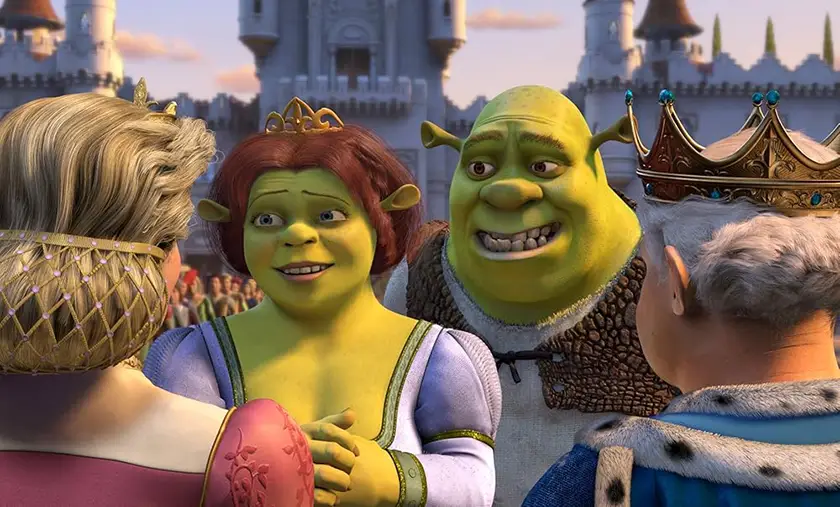
The original Shrek is a generational classic, but it can’t hold a candle to what I consider the vastly superior Shrek 2. Newly married ogres Shrek (Mike Myers, Wayne’s World) and Princess Fiona (Cameron Diaz, There’s Something About Mary) are invited to Fiona’s home to meet her parents, only to find their union isn’t as welcomed as they hoped. They deal with assassin-turned-ally Puss in Boots (Antonio Banderas), Fiona’s disgruntled father King Harold (John Cleese, Life of Brian), and the vain Fairy Godmother (Jennifer Saunders, Coraline), all characters who stand on par with the original’s cast in ways other sequels wish they could boast. Puss has his own movie that’s on this very list (seriously, DreamWorks has a surprisingly good track record with sequels), and the Fairy Godmother is such a perfect villain as the embodiment of the clean-cut “happily ever after” that the Shrek movies are designed to defy.
I like the first Shrek, but it’s very uneven in the joke department and falls victim to a few standard clichés. Shrek 2 not only has a much higher batting average of great jokes – some big, some surprisingly subtle – but you get a lot more out of its strange yet highly relatable family dynamic. Some scenes are written and edited so realistically that you wouldn’t think a Shrek movie would handle them that way. The pacing is brisk without feeling rushed, building momentum with memorable locations, inventive action, genuine romance, and the objective best use of “Holding Out for a Hero” ever. Seriously, I dare you to debate that. Even the stock ending song number isn’t enough to keep Shrek 2 from being one of the best sequels ever, one that anyone of any age can appreciate.
11. X-Men: First Class
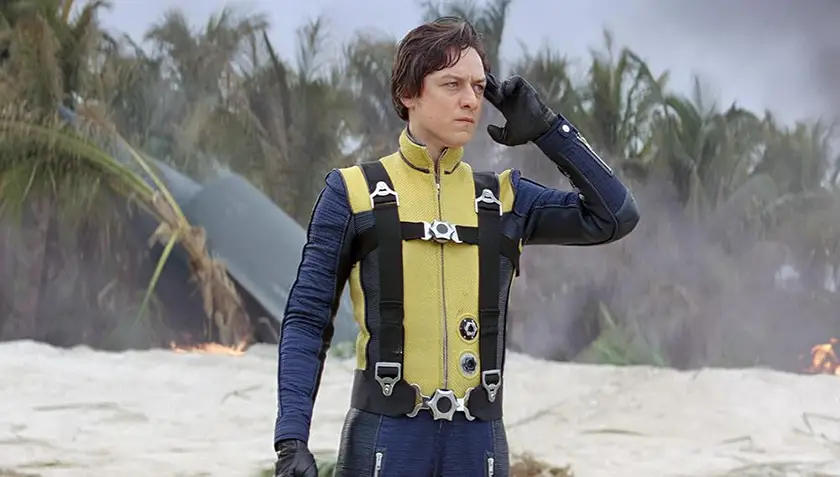
Okay, I’m borderline cheating by including a prequel on this list. But since prequels are story additions that come out after the originals (the term literally means pre-sequel), and because X-Men: First Class is just that good, I say it counts. It tells the origins of the friendship between mutants Charles Xavier (James McAvoy, Speak No Evil) and Erik Lehnsherr (Michael Fassbender, The Killer). The two form a team of mutants to stop a nuclear war at the hands of Sebastian Shaw (Kevin Bacon, MaXXXine), the Nazi who killed Erik’s mother. First Class is the golden example of what a prequel should do: explore events we only heard about in the original movies, further our understanding of who these characters are in ways a “pure” sequel couldn’t do, and recontextualize the events of every film before and since.
As inspired as the casting for the original X-Men was, McAvoy and Fassbender will always be who I think of when their characters’ names are brought up, because I understand and care about Xavier and Erik here more than any other movie in the franchise. So many scenes cut to the core of their still-budding philosophies regarding mutants, grieving, and their places in society. They conflict with each other in ways we’ve seen from their older counterparts, but you witness the desire and effort from both of them to find some way to remain on the same side.
The rest of the movie gives you the blend of stylish comic book craziness and grounded realism that the other films couldn’t quite nail 100%, making this one of the best X-Men movies for the pure fun on top of its weightier material. Just when the franchise was hurtling towards death, First Class was the shot in the arm it desperately needed… until it hurtled back towards death later.
10. Guardians Of The Galaxy: Vol. 2
Guardians of the Galaxy was a monster hit that cemented itself as one of the funniest, most entertaining Marvel films ever made. Its sequel not only maintained that freshness but added so much more dimension and darkness that it becomes its own beast entirely. Peter Quill (Chris Pratt, Jurassic World) and his team encounter his father, Ego (Kurt Russel, The Thing), who himself is a living planet. Just go with it. I still vividly remember how blindsided I was by the massive dramatic weight of Vol. 2 compared to the original. It brings considerable baggage and soul to almost every character that redefined how I see them, especially Peter’s adoptive father Yondu (Michael Rooker, Slither) who slips in as the standout of the film.
Ego as a villain is also a huge standout for his outward charm, inner vileness, and how his motivation is soaked in tragedy when you really think about his nature. The whole movie is about… well, ego, and how it can spread like a tumor to destroy the genuine relationships that make life worth living. And Vol. 2 accomplishes all of that without losing what made the original so deranged and hilarious. It’s just that kind of world where anything goes, and it feels even more expansive here than in Vol. 1. A lot of that comes down to the rich scenery that’s zany just as often as it is deceptively peaceful and heavenly. Guardians of the Galaxy: Vol. 2 takes advantage of every tool in its belt to make not just the best Guardians movie, but the best MCU movie to date.
9. Toy Story 2
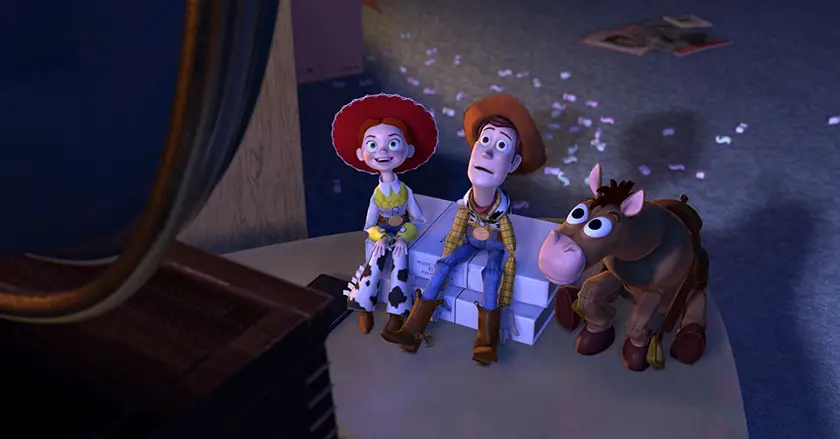
The original trilogy of Toy Story movies is so beautifully laid out, executed, and complete that Pixar couldn’t help but keep making more. But of those three, the best one is Toy Story 2, in which Woody (Tom Hanks, Forrest Gump) is taken by a toy collector and discovers his status as a famous antique. While Buzz Lightyear (Tim Allen, Galaxy Quest) and the other toys go on a rescue mission, Woody contemplates staying behind with fellow antiques Jessie (Joan Cusack, School of Rock) and the Prospector (Kelsey Grammer, X-Men). When I think of sequels that go the exact right places the original story should continue, this is one of the first that come to mind. If toys can feel, be protective, and get jealous… then why wouldn’t they be aware that their children will grow up, or that they could break and get left behind?
That’s exactly what Woody realizes when he’s offered the chance to be part of a museum, looked at with reverence forever. But then, if he truly loves Andy, would he sacrifice the chance to watch him grow up and forego the experiences they’ve yet to have along the way? With how this ingeniously ties into the human nature of life, death, and the inevitability of change, this story practically writes itself and takes the original’s already great themes to shockingly mature places. Plus, Toy Story 2 is just funnier than the original, largely thanks to the toys venturing to even more fun locations with new, distinct characters, all brought to life through vastly improved animation and color schemes. Pixar may infamously suffer from sequelitis, but their first attempt at a follow-up film will always have a friend in me.
8. Bride Of Frankenstein
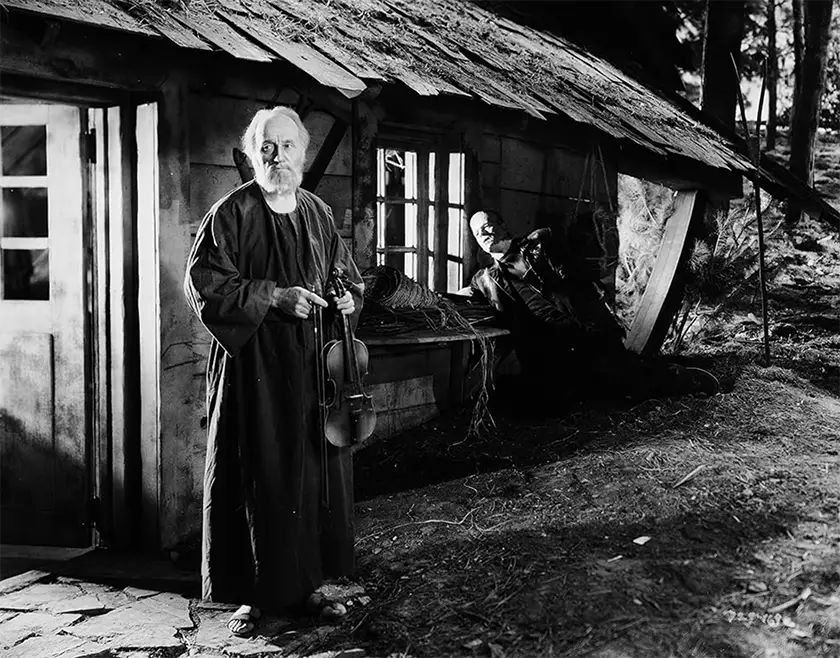
As great as 1931’s Frankenstein is, it stops at the point in the original book when things get really gripping. Well, that’s where Bride of Frankenstein comes in, adding staggering depth to the story and characters in one of the best horror films of all time. Doctor Henry Frankenstein (Colin Clive, Mad Love) has just lost his monster made from the dead (Boris Karloff, The Mummy), only for the monster to return with new intelligence and a yearning for a companion.
The monster’s journey is really where the heart of this movie lies. Karloff works beautifully to convey the developing humanity of a learning creature, including a sequence with a blind man that’s one of the most bittersweet moments ever put on film. Yet the monster’s growth is still weaponized for the desires of another, continuing the endless cycle of dehumanizing a creature arguably more human than some of the “real” people.
That’s not to say Frankenstein himself draws the short straw, as the pressure he faces to continue his groundbreaking science could draw any number of parallels to an artist or creator whose work is exploited to the point where they continue out of necessity rather than passion. Visually, this film (as well as the original) holds up phenomenally well with its harsh shadows, twisted angles, and heart-pounding editing, particularly during the climactic creation of the bride herself. It may not be a surprise that the best parts of the book make for the superior movie, but Bride of Frankenstein still deserves major credit for weaving that rich source material into the previous film’s established world while keeping the tragedy of the story very much alive.
7. Spider-Man 2
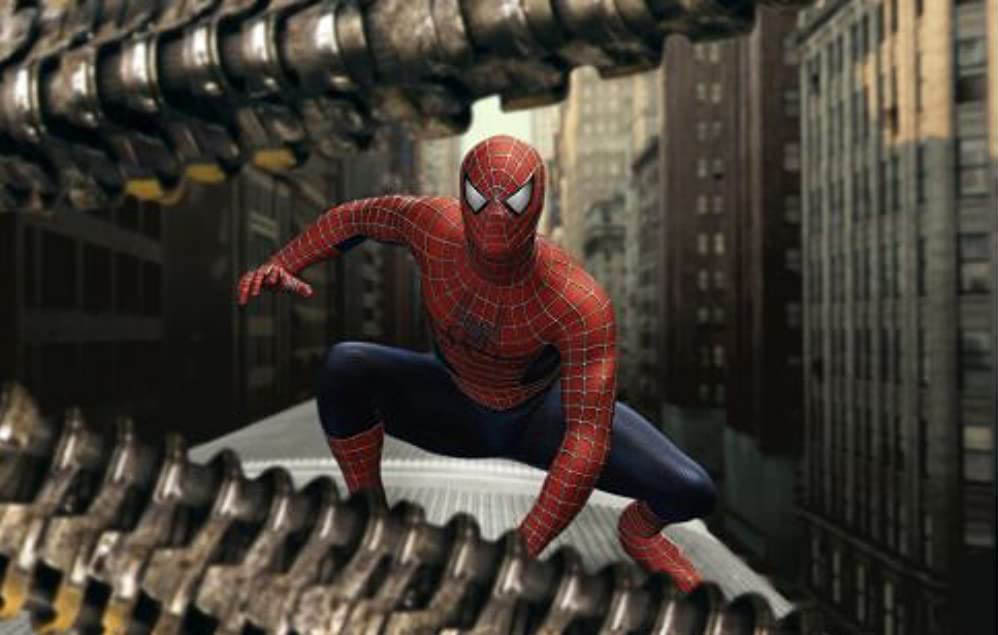
Spider-Man 2 takes everything the 2002 original did and not only does them better, but lay the groundwork for the superhero movie boom that was to follow. Tobey Maguire (The Great Gatsby) returns as Peter Parker, whose career as Spider-Man is eating away at his personal life when new foe Doctor Otto Octavius (Alfred Molina, Raiders of the Lost Ark) pushes him past his limits. As a superhero movie, Spider-Man 2 is all-encompassing. It has rich character development, a well-paced plot with major highs and lows, a memorable and layered villain, tons of eccentric humor, and action that still amazes me to this day. It’s also another sequel that takes the original’s story to every place you’d want it to go, mainly in how it addresses the hardships and burden that come with being Spider-Man.
Everything that could go wrong for Peter seemingly does go wrong, putting so much pressure on him that you start believing he’d be better off calling it quits. But it all comes back to the iconic Spider-Man saying: when you achieve great responsibility, great power will come. You also get compelling looks into the growing rivalry between Peter and his best friend Harry Osborne (James Franco, The Disaster Artist), an even greater look at the impact Spider-Man has on his city, and Octavius’s good intentions being torn apart by his fractured mind and ambitions. Mix in these deep ideas with the off-the-wall camp of the original, and you get what remains the best Spider-Man movie to date.
6. Terminator 2: Judgement Day
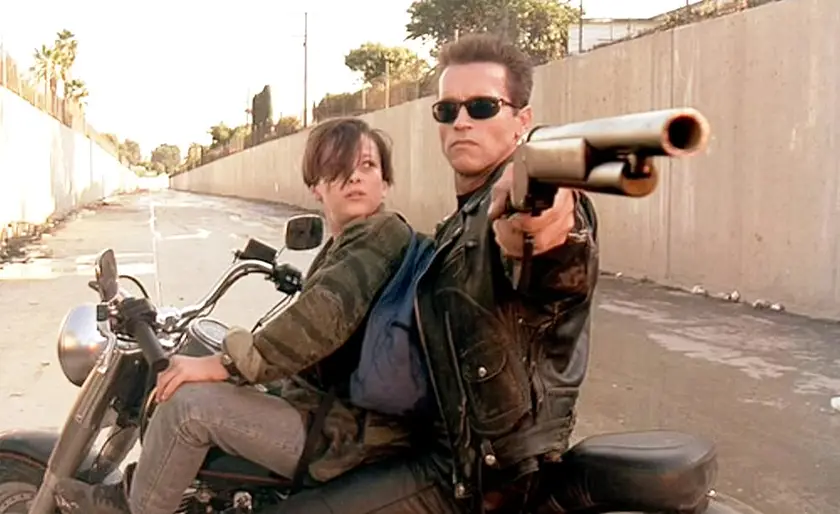
Like he did with Aliens, James Cameron swaps out the horror of his own The Terminator with hardcore action, combining an even better story with groundbreaking filmmaking and effects. When the evil AI Skynet sends its latest Terminator model (Robert Patrick, Bridge to Terabithia) back in time to kill future human leader John Connor (Edward Furlong, American History X), John relies on his mother Sarah (Linda Hamilton, Children of the Corn) and a reprogrammed Terminator (Arnold Schwarzenegger, Predator) to survive. The Terminator had its own charm as a pulpy horror/thriller with a very novel idea, but Terminator 2 pushes the premise seemingly as far as it could possibly go… as evidenced by its own sequels that many consider pale imitations. It introduced Patrick’s T-1000, whose abilities and physical menace make him one of the scariest, most seemingly unstoppable villains ever.
Meanwhile, Arnold’s T-800 goes from a serviceably creepy threat to a badass yet humorous ally to our heroes, while going through his own hardened flavor of the classic robot-learns-to-become-human trope. Sarah Connor’s trauma and paranoia are wholly understandable after what she went through in the original, but you’re also constantly hoping she can repair the damaged bond with her son, who himself is one of the most authentic kid protagonists you can get in an action movie.
And the action itself… yeah, modern movies have no excuses after this. The sheer balls this movie has to pull of this many real, bombastic, life-threatening stunts on display makes almost every other film in the genre look pedestrian. I know it’s unreasonable to expect every action movie to hit these standards, but you really can’t help but whip out the old phrase, “They just don’t make ’em like they used to.” Terminator 2 is a sequel that shows how, in the right hands, bigger is better.
5. Top Gun: Maverick
Top Gun is fun for what it is: a goofy piece of summer fluff that most people don’t take too seriously. So why, as the kids say, did the sequel go this hard 36 years later?! Naval aviator Maverick, once again played by Tom Cruise, returns to Top Gun to train its young graduates for a dangerous mission, one of whom is Rooster (Miles Teller, Whiplash), the son of his deceased friend Goose.
I was mildly invested in Maverick’s missions, antics, and eventual emotional crisis in the original film, but Top Gun: Maverick quintuples that investment at every single turn by revving up the old-school action filmmaking with much more prominent stakes. Maverick is committed to saving the son of the friend he lost, and Rooster needs to overcome his fears and insecurity that no doubt come from his knowledge of what happened. That’s already enough to make this sequel narratively better than the original, whose plot is mostly just… flight bros being flight bros.
But what launches Maverick this high on the list is Joseph Kosinski’s direction, which commits so well to nailing the performances, tone, and overall thrill ride that – I say this as a compliment – it often doesn’t even feel like Top Gun. Yet it also has fun as a summer blockbuster in all the right ways, staying faithful to the original without winding up frozen in time.
The flight sequences are electrifying, largely because they were actually done in-camera and shot dynamically by cinematographer Claudio Miranda. It’s easy to write off Top Gun: Maverick as just a summer flick that happens to be a decent legacy sequel. But it leans so hard into the best aspects of the original, carries that momentum so far forward, and boosts the craft, soul, and spectacle to such grand heights that I believe it’s destined to be remembered as one of the best sequels to ever grace the silver screen.
4. Dawn Of The Planet Of The Apes
For my money, this is easily the most underappreciated sequel on the list. It’s well regarded, yeah, but not in the same vein as the most revered sequels out there like it should be. The film takes place 10 years after a virus has crippled the human race and given rise to intelligent apes led by Caesar (Andy Serkis). The humans try to work with the apes for their own survival, but peace is threatened by the bitter ape Koba (Toby Kebbell, A Monster Calls).
The first half of this movie is a very unique type of nail-biting tension, in which two factions slowly, unsteadily try to work together with their peace dangling by a thread. Along the way, we’re taken into the new ape society through incredible visual storytelling and effects that make you believe you could reach out and touch these CGI apes. The way they talk, think, and operate gives them an almost mythic quality that adds to the notion that they’ve evolved beyond us… until that notion is taken down.
Rise of the Planet of the Apes is a great look at how the weaknesses of mankind can lead to our own downfall. But Dawn shows that as the apes’ intelligence reaches that of humans, they also inherit those same weaknesses. Now, they’re prone to vengeance and hatred. They let themselves be blinded as to who’s really trustworthy.
It’s their similarities to humans, not their differences, that cause the peace to collapse. Koba is a frightening embodiment of that frailty, while Caesar continues his arc of growing more human in the best and worst ways. You’re left wondering: is intelligence more of a burden than a gift? Is it even possible for all like-minded creatures to form a perfect unity? And might I remind you that I’m asking these psychological questions about a movie where apes ride on horses with machine guns? Dawn of the Planet of the Apes honors its franchise’s roots with a subversive, haunting sequel that, in putting a spotlight on talking apes, really puts that spotlight on us.
3. The Dark Knight
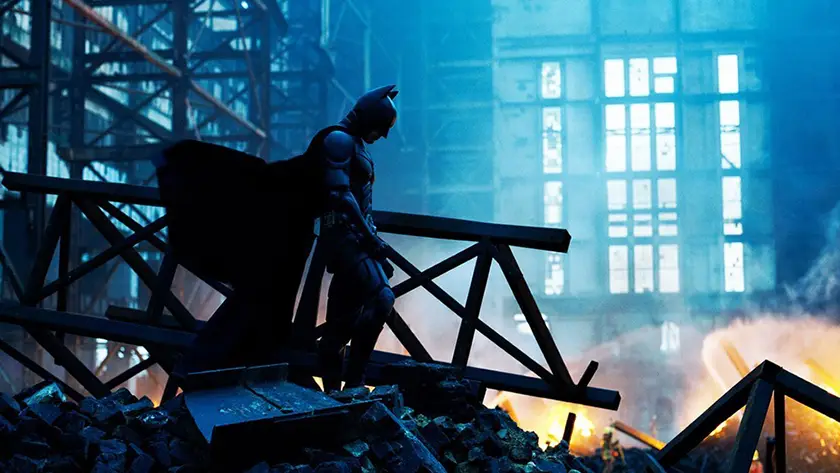
Often considered the best superhero movie of all time, The Dark Knight follows the already stellar Batman Begins with a film that transcends the genre and helped reshape the entire cinematic landscape. Bruce Wayne/Batman (Christian Bale, Ford v Ferrari) must face off against a new criminal mastermind, the Joker (Heath Ledger, Brokeback Mountain). What can I even say about Ledger’s Joker at this point? Everything about his terrifying performance, nihilistic philosophy, and unforgettable lines has been covered so extensively that it earned Ledger a posthumous Academy Award. For a superhero movie. Both of which are Oscar firsts. But to single him out exclusively would do incredible disservice to the film’s many other qualities as a masterpiece. At the end of Batman Begins, Batman is warned of the escalation that will come with his rise. The Dark Knight in its entirety is that escalation.
The endless rampage of chaos, terror, and shattered morale enhance the Joker’s point that all “good” people can be broken, and they pull Bruce back and forth between stances of Batman exacerbating the crisis versus him being the only means of fighting it. Batman always rides that kind of line, but The Dark Knight illustrates it better than any other, showing what makes symbols like him so powerful, hopeful, yet also dangerous and grey. By contrast, attorney Harvey Dent’s (Aaron Eckhart, Sully) descent into madness leads to the most dour, uncomfortable ending in any superhero movie.
Meanwhile, action fans get their fix via some incredible sequences, with the main truck chase being the obvious standout. What started as an already strong grounding of Batman in the previous film was taken to its logical next step in this crime thriller based on a comic book, not just a comic book movie. And as many great movies Batman has had, this one still reigns supreme.
2. Blade Runner 2049
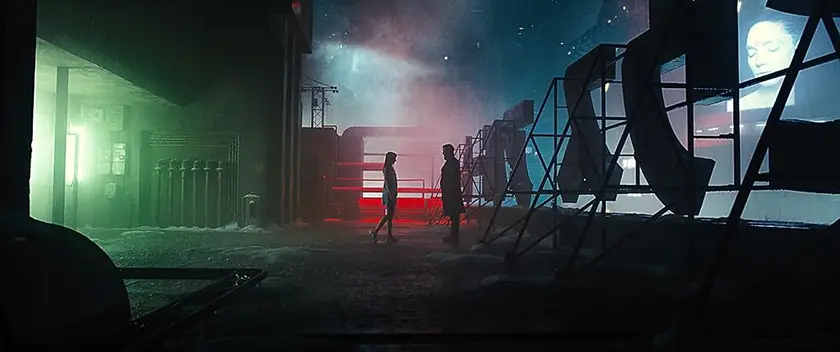
Well, Denis Villeneuve joins James Cameron in having made two all-time great sci-fi sequels: one to their own original, and another to a Ridley Scott movie. Insert “if I had a nickel” joke here. Blade Runner 2049 takes place thirty years after the original Blade Runner and sees K (Ryan Gosling, Barbie), a “blade runner,” tasked with hunting artificial humans known as replicants. He comes across a secret that rattles everything he knows about not just replicants, but himself.
Scott’s original film was already a feast for the eyes, but with the acclaimed Roger Deakins lensing 2049, we get one of the best, most thorough depictions of a dreary American future I could ever imagine. For a film heavy on VFX, nothing ever looks less than 100% real, nor does the cinematography slouch in throwing in worldbuilding touches, symbols, and themes of where we may be going (or, worse, already are) in nearly every frame.
Blade Runner 2049 benefits so much from the new perspective of K, who’s established as a forcibly obedient replicant and taken down a journey of self-discovery and true free will. Gosling’s performance is so fascinatingly subdued, hiding the subtlest hints of much stronger, more passionate feelings that even K may have never known were there. It’s a tale of the classic saying, “I think, therefore I am,” on a scale that’s both impossibly mind-bending and achingly personal, especially with how it relates to his holographic girlfriend Joi (Ana de Armas, Ballerina). These two have a scene that, on its own, could be a short film that fills you to the brim with trippy questions about love, intimacy, physicality, perception, and other grand ideas that just keep popping up throughout the rest of this slow, somber, otherworldly movie.
2049 may be a sequel with ties to the original, all of which are handled with just as much caring precision, but this is ultimately K’s story. And it’s one that, whether you’re a massive fan of Blade Runner or somehow never heard of it, has held up as one of the best films I’ve ever seen, period.
1. The Empire Strikes Back
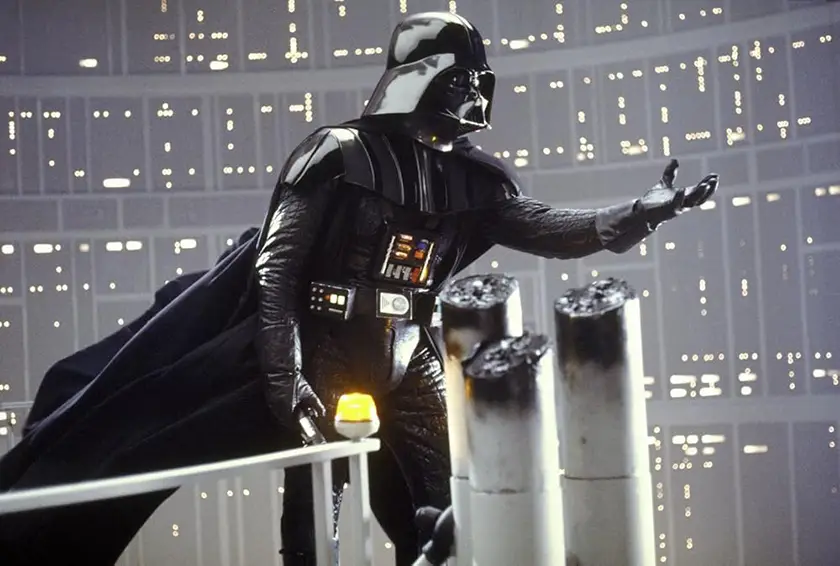
I know this is the most unimaginative #1 choice I could have possibly made… but can you blame me? There’s a reason this is considered the quintessential superior sequel: it took the lighthearted juggernaut that is the original Star Wars and added such an unfathomable amount of depth, darkness, and myth that it forever transformed what the franchise means to everyone. We take it for granted now, but Star Wars was only one movie before Empire came out, and that movie was more about epic space adventures and fun interactions than any heavy themes. Luke Skywalker (Mark Hamill,) and the Rebels are put on the run by the Empire, with Luke going to train as a Jedi under Master Yoda (Frank Oz) while his friends are hunted by the mysterious Darth Vader (David Prowse/James Earl Jones).
The battle to escape the Rebel base on Hoth immediately sets up a much dirtier, scrappier, more rugged universe than anything we saw in the original. The chase between Luke’s friends and the Empire is suspenseful on its own, letting us venture even further through space while deepening the connections between characters like Han (Harrison Ford) and Leia (Carrie Fischer). But it’s Luke’s training and Yoda’s philosophies that deepen our understanding of this galaxy far, far away at a spiritual level. It’s vague enough to be interpreted several different ways but approachable enough for literally everyone to relate to. By the time we reach the big showdown between Luke and Vader, you already feel like you’ve gone through an epic saga of increasingly dire stakes just in this one movie, which would already make this one of the best movie sequels.
But we all know what this movie’s biggest claim to fame is. For the one and only person reading this who doesn’t, I won’t give the twist ending away. But the rest of us know that it forever changed what this entire series is about and what it means to people. This isn’t just an adventure anymore; it’s now a story of family, terrible truths, and generations of mistakes that need to be righted.
And now, almost everything in mainstream Star Wars comes back to that central conceit, this total blurring of the lines between good and evil that no one would’ve imagined from the 1977 original. In that sense, no sequel has ever done more for its respective original than The Empire Strikes Back did. Which is why I and many others still consider it the absolute greatest movie sequel of all time, let alone one that’s better than the original.

